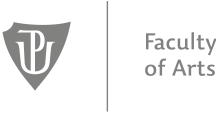e-rhizome 2020, 2(1):53-63 | DOI: 10.5507/rh.2020.004
Art in the Cascade of Brain Areas
- National Institute of Mental Health (NIMH)
- Third Faculty of Medicine Charles University
- Topolová 748, 250 67 Klecany, Czech Republic
- Petr.Adamek@nudz.cz
- Dominika.Grygarova@nudz.cz
Over the last three decades, we have witnessed the gradual penetration of modern and often experimental technologies into the humanities, which often could only prove their conclusions within the framework of logic and logical derivation. This trend can also be observed in fields such as aesthetics and art history. Experimental devices currently help us understand and describe events in our brain that contribute, for example, to why some works of art appeal to us and others do not. They help us to describe the techniques used by the artist to change our perception of his work and thus evoke certain emotions in us. This article should provide the reader with a basic orientation in the relatively young field of neuroesthetics and at the same time introduce the current state of the field in the environment of the Czech Republic.
Keywords: Neuroscience; art; aesthetics; experiment; humanities.
Accepted: October 13, 2020; Published: October 13, 2020 Show citation
References
- Adámek, Petr, Dominika Grygarová, Jiří Lukavský, and Ladislav Kesner. "Tracking Artistic Transformations: Comparing Paintings and Their Source Photographs." Ceskoslovenska Psychologie 63, no. 3 (2019). DOI: 10.1016/j.neuroimage.2015.06.025
 Go to original source...
Go to original source... - Berlyne, Daniel E. "Aesthetics and Psychobiology." (1973).
- Cavallo, Andrea, Ovidiu Lungu, Cristina Becchio, Caterina Ansuini, Aldo Rustichini, and Luciano Fadiga. "When Gaze Opens the Channel for Communication: Integrative Role of Ifg and Mpfc." NeuroImage 119 (2015): 63-69.
 Go to original source...
Go to original source... - Fechner, Gustav Theodor. Vorschule Der Aesthetik. Vol. 1: Breitkopf & Härtel, 1876. DOI: 10.1017/CBO9781139854580
 Go to original source...
Go to original source... - Grygarová, Dominika, Petr Adámek, Jiří Lukavský, and Ladislav Kesner. "Illuminating Smiles and Frowns: Visual-Affective Cueing Influences Viewer Perceptions of Page Layout Images." Perceptual and Motor Skills 127, no. 1 (2020): 75-97. DOI: 10.1177/0031512519876742
 Go to original source...
Go to original source... - Kesner, Ladislav. "Mental Ill-Health and the Epidemiology of Representations." Frontiers in psychiatry 9 (2018): 289. DOI: 10.3389/fpsyt.2018.00289
 Go to original source...
Go to original source... - Kesner, Ladislav. Neuroaesthetics: Real Promise or Real Delusion? The Aesthetic Dimension of Visual Culture. Edited by Ondřej Dadejdík-Jakub Stejskal. Cambridge: Cambridge Scholars Publishing, 2010. DOI: 10.3389/fnbeh.2020.00098
 Go to original source...
Go to original source... - Kesner, Ladislav, Iveta Fajnerová, Petr Adámek, Martin Buchtík, Dominika Grygarová, Jaroslav Hlinka, Pavel Kozelka, et al. "Fusiform Activity Distinguishes between Subjects with Low and High Xenophobic Attitudes toward Refugees." Frontiers in Behavioral Neuroscience 14 (2020): 98.
 Go to original source...
Go to original source... - Kesner, Ladislav, Dominika Grygarová, Iveta Fajnerová, Jiří Lukavský, Tereza Nekovářová, Jaroslav Tintěra, Yuliya Zaytseva, and Jiří Horáček. "Perception of Direct Vs. Averted Gaze in Portrait Paintings: An Fmri and Eye-Tracking Study." Brain and Cognition 125 (2018): 88-99. DOI: 10.1016/j.bandc.2018.06.004
 Go to original source...
Go to original source... - Lacan, Jacques. The Split between the Eye and the Gaze. 2003.
- Miller, Geoffrey F. "Aesthetic Fitness: How Sexual Selection Shaped Artistic Virtuosity as a Fitness Indicator and Aesthetic Preferences as Mate Choice Criteria." Bulletin of Psychology and the Arts 2, no. 1 (2001): 20-25.
 Go to original source...
Go to original source... - Notredame, Charles-Edouard, Delphine Pins, Sophie Deneve, and Renaud Jardri. "What Visual Illusions Teach Us About Schizophrenia." Frontiers in Integrative Neuroscience 8 (2014): 63. DOI: 10.3389/fnint.2014.00063
 Go to original source...
Go to original source... - Pacherie, Elisabeth. "Towards a Dynamic Theory of Intentions." Does Consciousness Cause Behavior (2006): 145-67. DOI: 10.7551/mitpress/9780262162371.003.0009
 Go to original source...
Go to original source... - Paštrnák, Martin, Aneta Dorazilová, and Mabel Rodriguez. "Vizuální Percepce a Její Narušení U Schizofrenního Onemocnění-Přehledová Studie." Ceskoslovenska Psychologie 61, no. 6 (2017): 593-604.
- Pignocchi, Alessandro. "How the Intentions of the Draftsman Shape Perception of a Drawing." Consciousness and Cognition 19, no. 4 (2010): 887-98. DOI: 10.1016/j.concog.2010.04.009
 Go to original source...
Go to original source... - Price, Uvedale. Essays on the Picturesque, as Compared with the Sublime and the Beautiful, and, on the Use of Studying Pictures, for the Purpose of Improving Real Landscape. Vol. 2: J. Mawman, 22, Poultry, 1810.
 Go to original source...
Go to original source... - Ramachandran, Vilayanur S, and William Hirstein. "The Science of Art: A Neurological Theory of Aesthetic Experience." Journal of Consciousness Studies 6, no. 6-7 (1999): 15-51.
- Silvia, Paul J. "Emotional Responses to Art: From Collation and Arousal to Cognition and Emotion." Review of General Psychology 9, no. 4 (2005): 342-57. DOI: 10.1037/1089-2680.9.4.342
 Go to original source...
Go to original source... - Summers, David. "Intentions in the History of Art." New Literary History 17, no. 2 (1986): 305-21. DOI: 10.2307/468898
 Go to original source...
Go to original source... - Webb, Daniel. Observations on the Correspondence between Poetry and Music. J. Dodsley, 1769.
- Zeki, Semir. "Inner Vision: An Exploration of Art and the Brain." (2002).
This is an open access article distributed under the terms of the Creative Commons Attribution-ShareAlike 4.0 International License (CC BY-SA 4.0), which permits use, distribution, and reproduction in any medium, provided the original publication is properly cited. No use, distribution or reproduction is permitted which does not comply with these terms.



